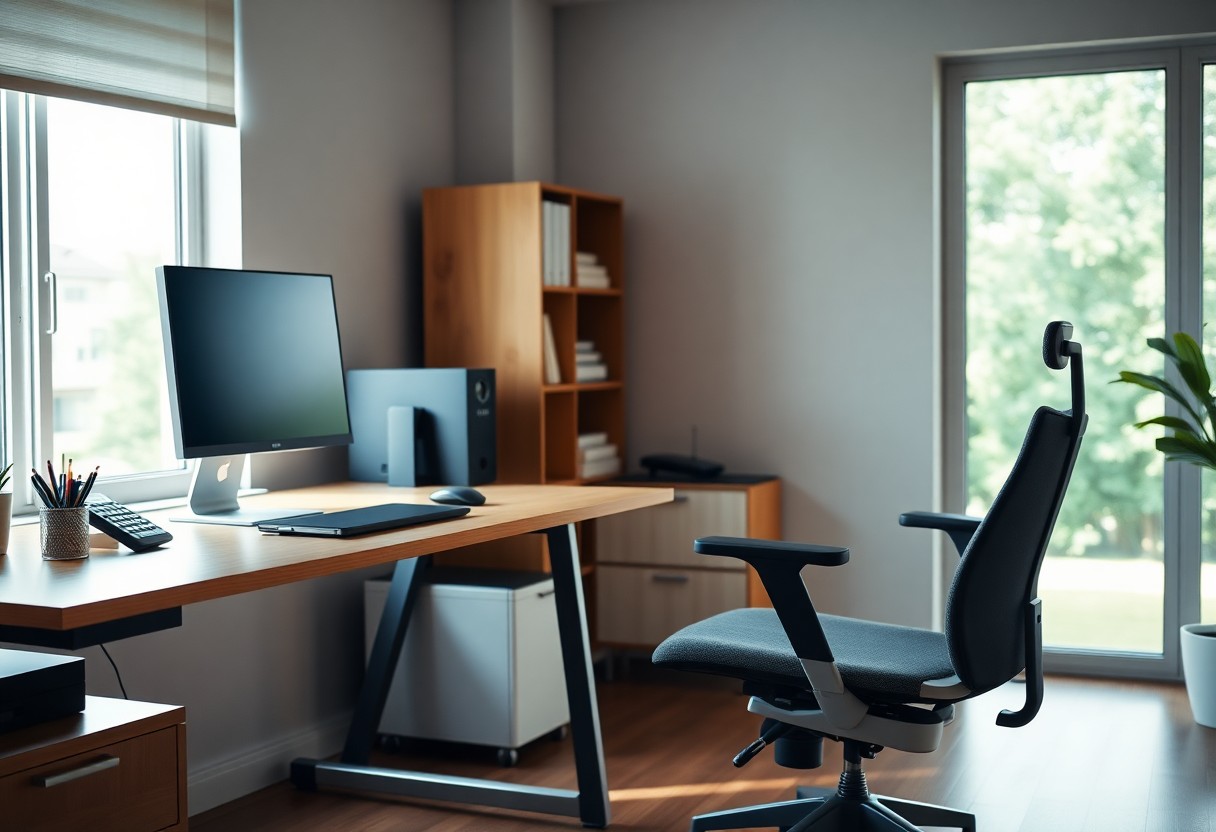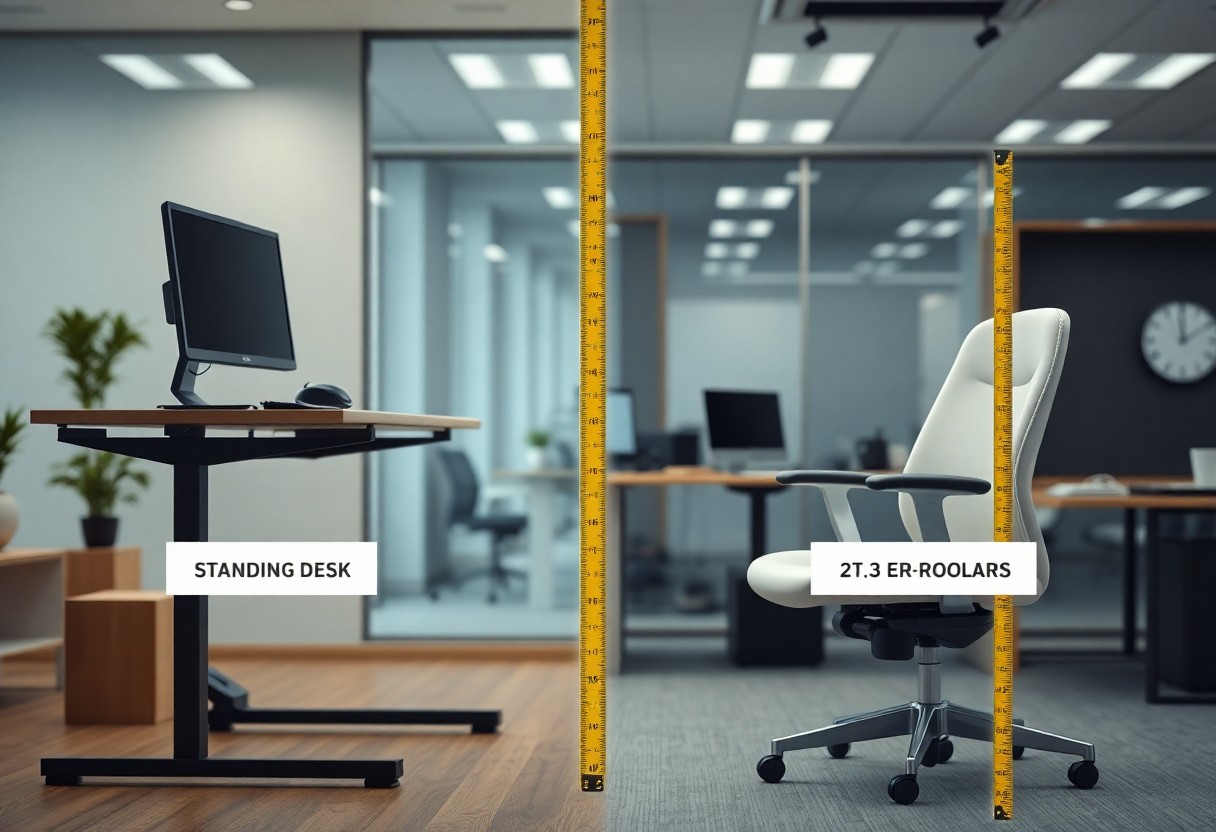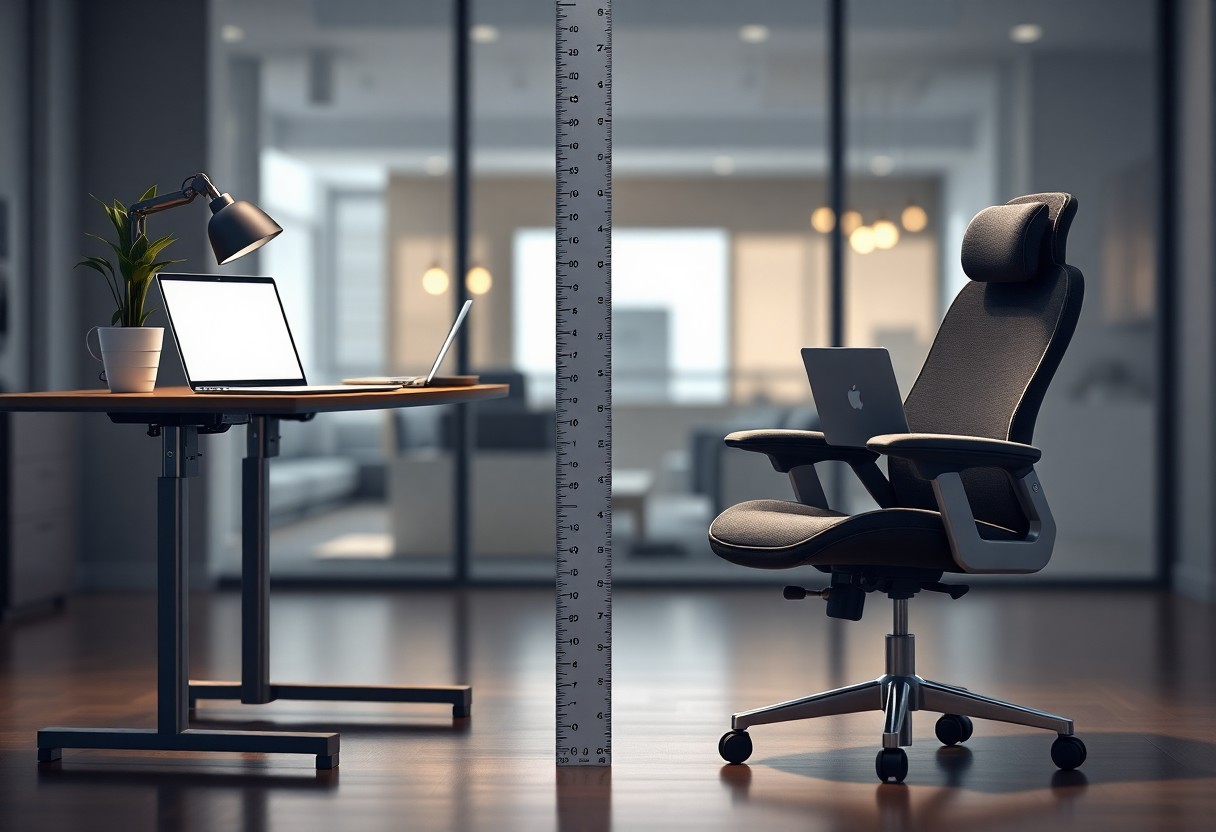
Most people spend long hours at their desks, making it necessary to choose the right setup for your health and productivity. You may find yourself weighing the benefits of standing desks against ergonomic chairs, each offering unique advantages for comfort and posture.
Understanding your specific needs and preferences can help you make an informed decision that not only enhances your work experience but also supports your overall well-being. This comparison will guide you in prioritizing the best option for your workspace.
Overview of Standing Desks
Standing desks have gained popularity as an alternative to traditional seating arrangements, promoting a healthier, more active work environment. Designed to allow you to work while standing, these desks are adjustable and cater to various heights, making them accessible for different users.
People often turn to standing desks to enhance productivity, reduce sedentary behavior, and integrate movement into their daily routines. As you consider this option, understanding the specific benefits and challenges can help you make an informed decision.
Benefits of Standing Desks
Utilizing a standing desk can lead to increased energy levels and improved posture, reducing the risk of back pain commonly associated with prolonged sitting. Studies suggest that standing while working can enhance focus and productivity; employees report feeling more alert and engaged.
Additionally, standing desks encourage greater calorie expenditure compared to sitting, assisting in weight management and overall health. Investing in your workspace in this manner represents a proactive approach to personal well-being.
Potential Drawbacks
While standing desks offer several advantages, you may also encounter challenges. Prolonged standing can lead to fatigue, discomfort, or strain in your legs and lower back. Transitioning from a sedentary to a standing position requires adjustment, often resulting in mixed feelings about productivity levels. Moreover, standing desks can take up more space, limiting your options for desk layout.
Pain in the feet, legs, or lower back is common among those who stand for too long without taking breaks. Without supportive footwear or proper flooring solutions like anti-fatigue mats, these drawbacks can outweigh the benefits.
Most experts recommend alternating between sitting and standing throughout the day, so you can balance the advantages of both setups while minimizing any negative consequences. By paying attention to your body’s signals and optimizing your workspace, you can enjoy a more sustainable experience with a standing desk.
Understanding Ergonomic Chairs
Ergonomic chairs are designed to provide optimal support and comfort, particularly during long periods of sitting. They feature adjustable components like seat height, lumbar support, and armrests, allowing you to customize the chair to fit your body type and posture. The aim is to reduce physical strain, enhance productivity, and promote overall well-being while working at your desk.
Benefits of Ergonomic Chairs
Investing in an ergonomic chair can significantly improve your comfort and health. These chairs help reduce the risk of back pain and musculoskeletal disorders by supporting your spine’s natural curve. Studies show that using an ergonomic chair can enhance your productivity by keeping you focused and reducing fatigue, leading to more efficient work hours.
Potential Drawbacks
Despite their advantages, ergonomic chairs can have some downsides. The initial cost may be higher than standard chairs, deterring some buyers. Not all ergonomic chairs fit every body type perfectly, which might lead to discomfort for some users if adjustments are not made properly. Additionally, reliance on ergonomic features may lead to a tendency to remain sedentary for extended periods, counteracting the benefits.
Many ergonomic chairs emphasize adjustability, but if you don’t customize your chair to your specific body dimensions, it may not provide the intended benefits. For instance, failing to adjust the lumbar support can still result in discomfort, making it necessary to install the chair correctly according to your needs.
Additionally, the financial investment might not seem justified for casual users or those who may not spend significant hours sitting. Balancing ergonomic design with movement throughout your day is key to avoiding physical discomfort.

Health Implications of Each Option
Your choice between a standing desk and ergonomic chair directly impacts your physical well-being. Standing desks promote dynamic movement, potentially reducing the risk of weight gain and cardiovascular disease. On the other hand, ergonomic chairs support your back, promoting spinal alignment and reducing strain during prolonged sitting, which can help prevent chronic pain. Balancing both options can enhance your daily comfort and health outcomes.
Impact on Posture and Comfort
Long-term Health Benefits

Work Productivity and Focus
Your choice between a standing desk and an ergonomic chair influences your productivity and ability to focus throughout the workday. Research indicates that an optimal work environment enhances concentration and efficiency, allowing you to tackle tasks effectively. Understanding how each option affects your performance can guide your decision in creating a workspace that supports your goals.
How Standing Desks Affect Productivity
Ergonomic Chairs and Work Focus
Cost Considerations
Evaluating your budget is imperative when choosing between a standing desk and an ergonomic chair. Each option comes with its price point that can impact your decision, so consider your long-term investment in comfort and productivity. For a detailed breakdown, refer to the Standing Desk vs. Ergonomic Chair: Expert Guide.
Price Range of Standing Desks
Standing desks typically range from $200 to over $1,000, depending on the features. A basic manual desk may only cost a few hundred dollars, while electric models with advanced functions and durable materials can drive costs significantly higher, often beyond $800.
Price Range of Ergonomic Chairs
Ergonomic chairs vary widely in price, generally falling between $100 and $1,500. You can find budget-friendly options that offer basic adjustments but investing in higher-end models can provide better lumbar support and customizations that enhance long-term comfort.
In the ergonomic chair segment, popular brands often start around $300 for mid-range models, providing adjustable seating and lumbar support. High-end options, like those from Herman Miller or Steelcase, can exceed $1,200, justified by superior materials, extensive warranty periods, and design innovations that encourage better posture throughout your workday.
User Demographics and Preferences
Your choice between a standing desk and an ergonomic chair often depends on individual demographics and personal work styles. Younger professionals may lean towards standing desks for increased energy and productivity, while older workers might prioritize the comfort of ergonomic chairs.
Furthermore, individuals with specific health concerns, such as back pain or mobility issues, should weigh their options carefully. For more insights, read about Standing Desk vs Ergonomic Chair Your Ideal Setup.
Who Should Choose a Standing Desk?
If you thrive on movement and prefer being on your feet while working, a standing desk might be your best option. This setup can particularly benefit those in creative or dynamic roles, allowing you to engage actively with tasks and maintain better energy levels throughout the day.
Who Should Opt for an Ergonomic Chair?
Individuals who spend long hours at a desk and require comfort and support may find an ergonomic chair imperative. This choice alleviates pressure on the lower back and enhances overall posture, making it ideal for those with sedentary job roles or pre-existing health conditions.
An ergonomic chair caters to specific needs, like lumbar support and adjustable features, tailoring to your body type and sitting habits. With evidence suggesting that prolonged sitting can adversely affect health, those who already experience discomfort or fatigue will benefit significantly from ergonomic design. Prioritizing comfort in your workspace can lead to increased productivity and well-being.
Summing up
Taking this into account, your choice between a standing desk and ergonomic chair should reflect your unique work style and comfort preferences. If you value movement and flexibility, a standing desk may suit you better, while an ergonomic chair can provide vital support for prolonged periods of sitting. Prioritize what aligns with your daily tasks, body comfort, and health needs to optimize productivity and well-being in your workspace.




